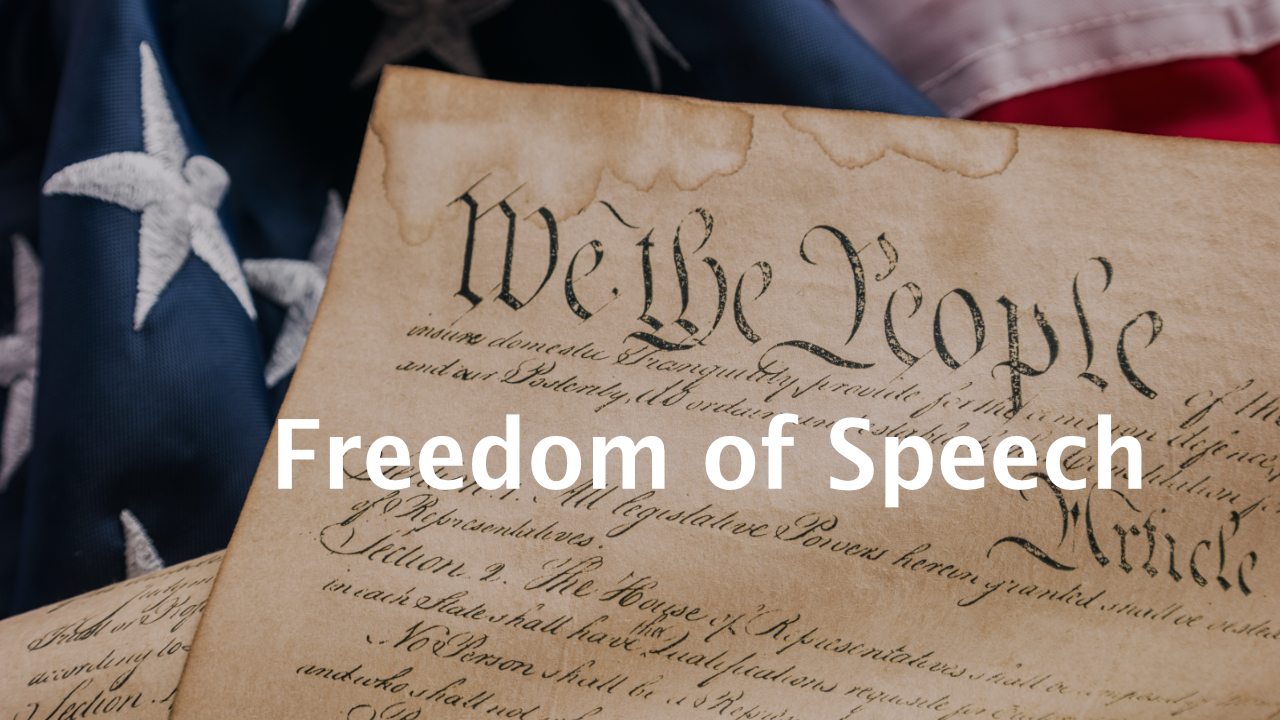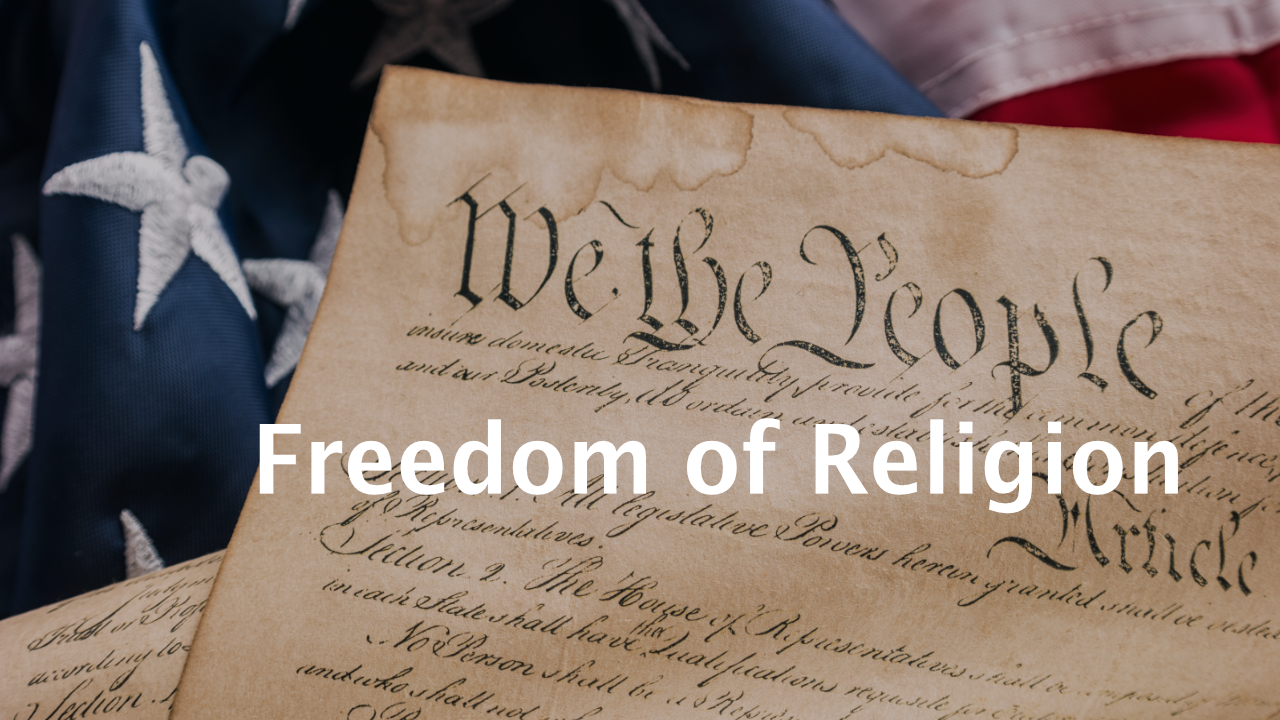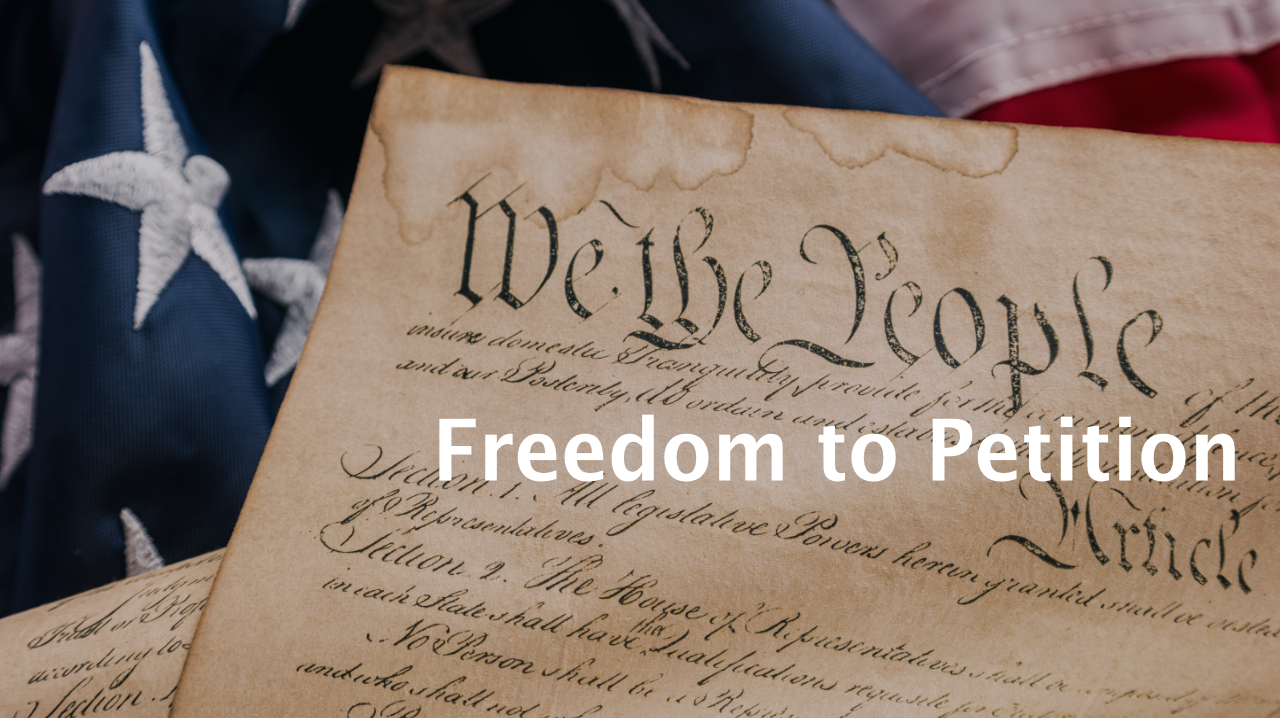First Amendment
The U.S. Constitution, the Bill of Rights and the First Amendment
In 1791, the Bill of Rights was adopted as part of the U.S. Constitution, including the First Amendment which safeguards the freedom of speech, religion, and the press. Additionally, it guarantees the right to assemble peacefully and petition the government. The interpretation and meaning of the First Amendment have been a subject of continuous controversy and interpretation throughout the years. The Supreme Court has ruled on significant cases concerning citizens’ rights to protest against U.S. involvement in foreign conflicts, the burning of the national flag, and the disclosure of classified government files.
Bill of Rights
In 1787, a delegation of politicians, including James Madison and Alexander Hamilton, met in Philadelphia to draft a fresh U.S. Constitution, while the antifederalists, led by Patrick Henry, the first governor of Virginia, objected to its ratification. They believed that the new constitution would grant excessive power to the federal government at the state’s expense. Additionally, they contended that the Constitution lacked safeguards for individual rights.
The ratification of the Constitution in various states triggered a debate centered on the need for a Bill of Rights to protect fundamental civil liberties. Fearing failure, proponents of the Constitution, known as Federalists, pledged to concede to the antifederalists’ demands for a Bill of Rights. James Madison, a Virginia representative and later the fourth President of the United States, wrote most of the Bill of Rights. He created the Bill of Rights during the 1st United States Congress, which convened from 1789 to 1791, coinciding with President George Washington’s first two years in office. The Bill of Rights, comprising the first ten amendments to the U.S. Constitution, was introduced to Congress in 1789 and approved on December 15, 1791.
First Amendment Text
The First Amendment text reads:
“Congress shall make no law respecting an establishment of religion, or prohibiting the free exercise thereof; or abridging the freedom of speech, or of the press; or the right of the people peaceably to assemble, and to petition the Government for a redress of grievances.”
Freedom of Speech

Freedom of the Press
This freedom is similar to freedom of speech, in that it allows people to express themselves through publication.
There are certain limits to the freedom of the press. False or defamatory statements—called libel—aren’t protected under the First Amendment
Schenck v. United States, 1919: In this case, the Supreme Court upheld the conviction of Socialist Party activist Charles Schenck after he distributed fliers urging young men to dodge the draft during World War I
The Schenck decision helped define limits of freedom of speech, creating the “clear and present danger” standard, explaining when the government is allowed to limit free speech. In this case, the Supreme Court viewed draft resistance as dangerous to national security.
New York Times Co. v. United States, 1971: This landmark Supreme Court case made it possible for The New York Times and Washington Post newspapers to publish the contents of the Pentagon Papers without risk of government censorship.
The Pentagon Papers were a top-secret Department of Defense study of U.S. political and military involvement in Vietnam from 1945 to 1967. Published portions of the Pentagon Papers revealed that the presidential administrations of Harry Truman, Dwight D. Eisenhower, John F. Kennedy, and Lyndon B. Johnson had all misled the public about the degree of U.S. involvement in Vietnam.
Texas v. Johnson, 1990: Gregory Lee Johnson, a youth communist, burned a flag during the 1984 Republican National Convention in Dallas, Texas to protest the administration of President Ronald Reagan.
The Supreme Court reversed a Texas court’s decision that Johnson broke the law by desecrating the flag. This Supreme Court Case invalidated statutes in Texas and 47 other states prohibiting flag-burning.

Freedom of Religion

The First Amendment to the United States Constitution not only protects the right to freedom of speech but also guarantees the freedom of religion. Specifically, this amendment prohibits the government from establishing any official religion, nor can it show favoritism towards any particular faith. This prohibition has often been interpreted as the “separation of church and state,” a phrase not explicitly stated in the Constitution but is commonly used to describe the intent behind this amendment.
The separation of church and state has been a fundamental principle of American law since the country’s founding. It aims to ensure that no single religious doctrine becomes a legal basis for public policy or that the government interferes with individuals’ personal beliefs. This amendment allows citizens to practice their religion freely without fear of persecution or discrimination from the government. As such, the First Amendment is a critical protection of individual rights and the foundation of religious freedom in the United States.
Reynolds v. United States (1878): This Supreme Court case upheld a federal law banning polygamy, testing the limits of religious liberty in America. The Supreme Court ruled that the First Amendment forbids the government from regulating belief but not from actions such as marriage.
Braunfeld v. Brown (1961): The Supreme Court upheld a Pennsylvania law requiring stores to close on Sundays, even though Orthodox Jews argued the law was unfair to them since their religion required them to close their stores on Saturdays as well.
Sherbert v. Verner (1963): The Supreme Court ruled that states could not require a person to abandon their religious beliefs in order to receive benefits. In this case, Adell Sherbert, a Seventh-day Adventist, worked in a textile mill. When her employer switched from a five-day to a six-day workweek, she was fired for refusing to work on Saturdays. When she applied for unemployment compensation, a South Carolina court denied her claim.
Lemon v. Kurtzman (1971): This Supreme Court decision struck down a Pennsylvania law allowing the state to reimburse Catholic schools for the salaries of teachers who taught in those schools. This Supreme Court case established the “Lemon Test” for determining when a state or federal law violates the Establishment Clause—that’s part of the First Amendment that prohibits the government from declaring or financially supporting a state religion.
Ten Commandments Cases (2005): In 2005, the Supreme Court came to seemingly contradictory decisions in two cases involving the display of the Ten Commandments on public property. In the first case, Van Orden v. Perry, the Supreme Court ruled that the display of a six-foot Ten Commandments monument at the Texas State Capital was constitutional. In McCreary County v. ACLU, the U.S. Supreme Court ruled that two large, framed copies of the Ten Commandments in Kentucky courthouses violated the First Amendment.
Freedom to Assemble Peacefully

The First Amendment to the United States Constitution guarantees the freedom to assemble peacefully, which is one of the fundamental rights that ensure a functioning democracy. This right allows citizens to come together, express themselves, and petition the government for a redress of grievances. The freedom to assemble peacefully has been instrumental in creating social and political change in the United States, from the women’s suffrage movement to the civil rights movement and the anti-war protests of the 1960s.
The right to assemble is critical in enabling citizens to exercise their First Amendment rights, as it creates a platform for free speech, the exchange of ideas, and the peaceful expression of dissent. Without the freedom to assemble, the voices of ordinary people would be drowned out by powerful institutions and interests, making democracy nothing more than a hollowed-out ideal. The right to assemble is, therefore, a crucial aspect of democratic participation, one that ensures that the government remains accountable to the people it serves.
Moreover, the freedom to assemble peacefully is a vital means of creating change through collective action. Throughout history, peaceful protests have been instrumental in bringing about significant social and political change in the United States. From the Boston Tea Party to the March on Washington, collective action has been a powerful tool for citizens to challenge the status quo, call attention to injustice, and push for reforms.
Collective action can also have a ripple effect beyond immediate political and social changes. It can also inspire future generations to become politically engaged and create lasting social change. By participating in peaceful protests and engaging in collective action, citizens can become more aware of their rights and responsibilities in a democratic society.
However, while the right to assemble is essential, it is not absolute. The government may impose reasonable restrictions on the time, place, and manner of peaceful assembly to protect public safety, prevent disruptions, and ensure that other citizens’ rights are not infringed upon. For example, governments may require permits for large gatherings to allow for the appropriate allocation of resources and to prevent clashes with counter-protesters.
The freedom to assemble peacefully is an essential right protected by the First Amendment of the US Constitution. It is a crucial component of a functioning democracy, enabling citizens to express themselves, petition the government, and create change through collective action. While the government may impose reasonable restrictions on the time, place, and manner of peaceful assembly, this right remains an essential aspect of democratic participation, one that allows citizens to hold their government accountable and work towards a more just society.
NAACP v. Alabama (1958): When Alabama Circuit Court ordered the NAACP to stop doing business in the state and subpoenaed the NAACP for records including their membership list, the NAACP brought the matter to the Supreme Court. The Court ruled in favor of the NAACP, which Justice John Marshall Harlan II wrote: “This Court has recognized the vital relationship between freedom to associate and privacy in one’s associations.”
Edwards v. South Carolina (1962): On March 2, 1961, 187 Black students marched from Zion Baptist Church to the South Carolina State House, where they were arrested and convicted of breaching the peace. The Supreme Court ruled in an 8-1 decision to reverse the convictions, arguing that the state infringed on free speech, free assembly, and freedom to the petition of the students.
Freedom to Petition

The right to petition the government is an essential component of American democracy that protects the ability of citizens to make requests of government officials using any legal means available. This includes peaceful protests, writing letters and emails, giving testimony, filing lawsuits, collecting signatures, and others.
The concept of petitioning the government originated in England in 1215 when the Magna Carta was drafted to limit the power of the king and his government. The Magna Carta enabled the people to make requests of the king through his 25 barons, giving citizens a voice and a means to communicate with the ruling class. This was a significant step in the progression of democracy, as it established the notion that the government should be accountable to its citizens.
The right to petition was further solidified in the English Declaration of Rights in 1689, which was created in response to the abuses of King James II. The document listed the wrongs committed by the king and affirmed the rights of common citizens. The Declaration of Rights allowed citizens to address the government without fear of imprisonment, establishing the freedom of speech and the right to assemble peacefully.
The right to petition the government is now enshrined in the First Amendment of the U.S. Constitution, which guarantees the freedom of speech, religion, the press, assembly, and petition. The First Amendment recognizes the crucial role of citizen participation in shaping public policy and holding the government accountable to the people.
One of the most common ways that citizens exercise their right to petition the government is by participating in peaceful protests. Protests have been a significant part of American democracy since the country’s founding and have been instrumental in bringing about social change. Examples of successful protests include the Women’s Suffrage March of 1913, the Civil Rights March on Washington in 1963, and the March for Our Lives in 2018.
Another important means of petitioning the government is by writing letters and emails to elected officials. This method allows citizens to communicate directly with their representatives and express their concerns and opinions on issues that matter to them. Additionally, filing lawsuits is an effective way to petition the government for redress of grievances, and it has been instrumental in bringing about significant legal changes in areas such as civil rights and environmental protection.
The right to petition the government is a fundamental component of American democracy that allows citizens to participate in shaping public policy and holding the government accountable to the people. The right to petition has a rich history dating back to the Magna Carta and has been instrumental in bringing about social and legal changes in the United States. As such, citizens must continue to exercise their right to petition the government to ensure that their voices are heard, and their concerns are addressed.
SOURCES
The Bill of Rights; White House.
History of the First Amendment; The University of Tennessee, Knoxville.
Schenck v. United States; C-Span
